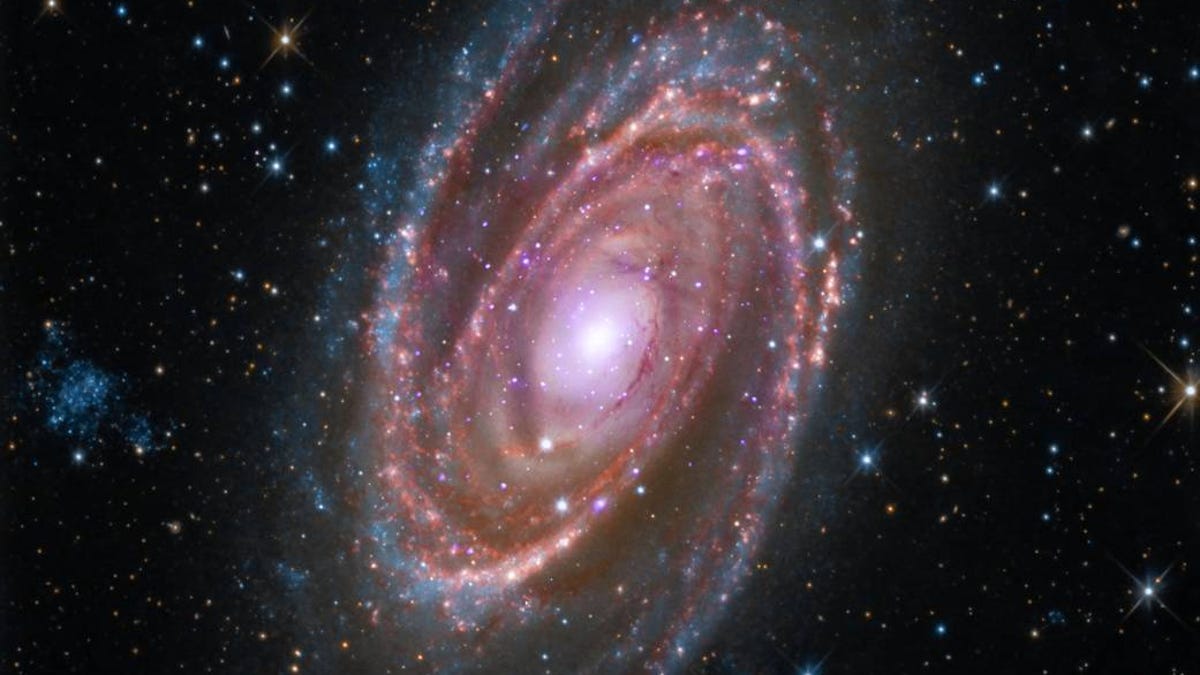Here's Why Spiral Galaxies Are Fascinating - As Well As Ridiculously Good-Looking
Spiral galaxies may be the best looking galaxies, but learning about their secrets, evolution and massive size is pretty mind-blowing too

Click here to see GameSpot & EA's guide to Mass Effect Andromeda
Even if you're not too clued up on your astronomical terminology, you're likely to have seen an image of a spiral galaxy before because their winding formation looks so damn good. But these swirling star systems aren't just photogenic, they're fascinating too.
Back in the 1920s, Edward Hubble started working on a classification system for galaxies, known as the Hubble sequence. This is when he labelled some galaxies as spirals, lenticulars, ellipticals and irregulars.
Spiral galaxies, as you'd expect, all have a spiral-like formation around a central bulge in the middle, which comprises of older stars. This distinctive bulge is then surrounded by a flat, rotating disc of brighter, younger stars, gas and dust. Although it can't be directly observed, scientists believe that lurking right there in the centre of a spiral galaxy's bulge, there's a supermassive black hole.
It's hard to fathom the huge size of a spiral galaxy, after all they're comprised of hundreds of billions of stars. But experts believe that the big, visible disc you can see - not counting all the dust and non-observable debris on the outside - could be anything from 10 to 300 thousand light years across.
Not only are galaxies classified in one of Hubble's four categories. But under the spiral galaxy umbrella there are also a number of different types. Firstly, there are classic spirals, which have a central bulge in the middle and then spiral arms radiate from it. And there's also barred spirals, which are spiral arms that radiate from a bar rather than a more circular bulge. Our own galaxy, the Milky Way, was originally thought to be a regular spiral galaxy. But it was only in the 1990s that scientists began to suspect the truth: it's actually a barred spiral galaxy, it was just difficult to observe the central bar from Earth's position within it.
Spiral Galaxy M51
Then whether the galaxy is a spiralled or a barred, it can also be classified by how tightly wound the spiral 'arms' are. For example, Sc and SBc galaxies tend to have looser arm structures. In comparison, Sa and SBa galaxies are more tightly wrapped.
It's believed that around 77 percent of all of the galaxies that have been observed by scientists are spiral galaxies. But they're not thought to be the dominant galaxy type in the whole universe. That title probably goes to elliptical galaxies, which scientists believe that spiral galaxies evolve into over time as spirals burn through their gas.
The biggest spiral galaxy that scientists have observed is NGC6872, which is believed to be a monster 522,000 light years across. This means the gigantic barred spiral galaxy is about 5 times the size of our own Milky Way.
Apart from some smaller companion galaxies, like the Magellanic Clouds, the closest spiral galaxy to our own Milky Way is the Andromeda galaxy, which is also known as M31 or NGC224. This is why Andromeda also currently holds the title of the most distant thing you can sometimes see with the naked eye. But despite that accolade, it's still 2.3 million light years away from us here on Earth. Although they're dizzyingly far apart, both the Milky Way and Andromeda galaxies are expected to collide in roughly 4.5 billion years, which many scientists believe will see them merging to form a giant elliptical super galaxy.
There are a number of other distinctive spiral galaxies that have been observed by astronomers over the years, like the Pinwheel Galaxy, also known as M101 or NGC5457, which is in the Ursa Major constellation. Or the Whirlpool Galaxy, also known as M51a or NGC5194, which was the first galaxy to be classified as a spiral galaxy and lives in the Canes Venatici constellation.
Scientists aren't completely sure how these distinctive galaxy structures are formed, especially the spiralling arms. Which is why their birth and evolution has become something of a space puzzle over the decades. Their formation is believed to have begun by the collapse of gas clouds early on in the history of the Universe. From there, the most popular theories suggest the spiral is a result of density waves travelling through the outer arms or it can happen when two galaxies encounter each other.
To explore the Andromeda Galaxy as told by EA's Mass Effect Andromeda, click here
Photos by NASA